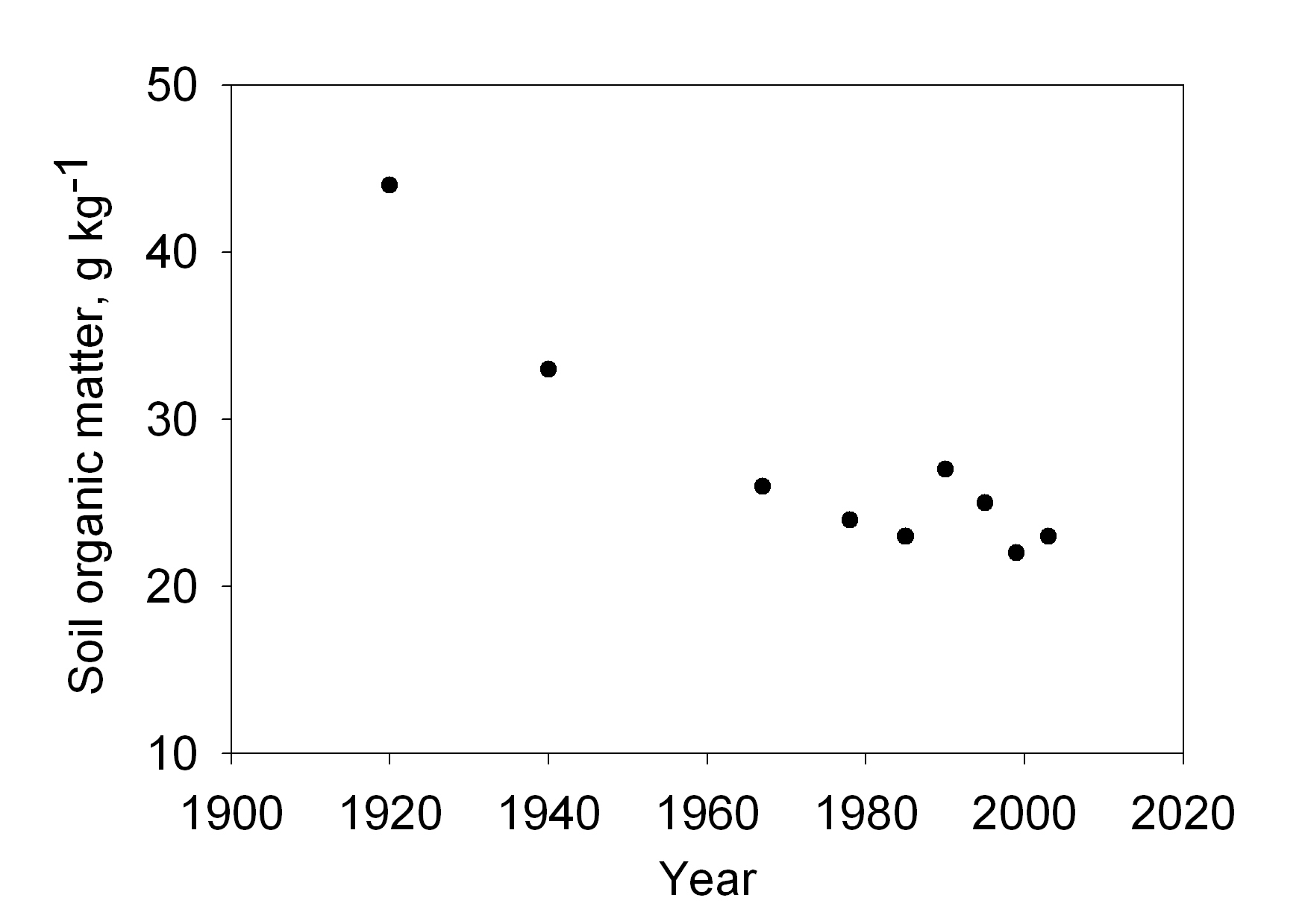
Saturday, 15 July 2006
150-11
Transition of Korean Soil Quality.
Won Kyo Jung, You Hak Kim, Myeong Sook Kim, and Han Kang Kwak. National Institute of Agricultural Science and Technology, 249 Sudun, Suwon Kyunggi, 441-707, South Korea
Korean paddy fields have been managed as a high-yield oriented management system for the past century. We have tried to increase rice productivity with breeding and management technologies for many years. Because of these efforts, rice yield have doubled in recent years compared to before the Korean War. During the past half century, we have focused on improving nutrient efficiency on paddy fields for rice production. According to the ancient records, rice cultivation has started about 5000 years ago in the Korean peninsula. Rice has been the major cereal for most Korean people. We only have grown Japonica type of rice because Korean people preferred a sticky type of rice. Few chemical fertilizers have applied into paddy field until 1950's. But at the same time with Korean industrial development, chemical fertilizers have been major factor for rice production so far. The objective of this research was to identify transition of Korean paddy soil quality. Soil properties including chemical and physical characteristics, which were obtained from nationwide scale, were used to estimate soil quality index and to evaluate temporal variation of paddy soil quality. Results showed that paddy soil quality index have increased after that soil quality index hit the bottom in 1990's. Soil organic matter (SOM) showed similar pattern with paddy soil quality (Figure 1), because of SOM have been considered as a major paddy soil quality factor. In conclusion, we found that Korean paddy soil quality have improved since 1990's influenced by application of environment-friendly agriculture.

Back to 3.1B Translating Soil Science into Agricultural & Environmental Policy - Poster
Back to WCSS
Back to The 18th World Congress of Soil Science (July 9-15, 2006)